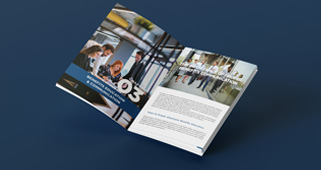In recent years, the healthcare landscape has been marked by a steady and often alarming rise in costs. For individuals, families, and businesses alike, these escalating expenses can pose significant financial challenges and strain resources. In the face of this reality, it’s essential to explore alternative healthcare funding options that offer greater flexibility, cost control, and customization. Among these options, level funding, self-funding, and Professional Employer Organizations (PEOs) stand out as viable solutions worth considering.
Understanding the Healthcare Cost Conundrum
Before delving into alternative funding models, it’s crucial to grasp the factors driving the surge in healthcare costs. Several elements contribute to this phenomenon, including:
- Medical Inflation: The cost of medical services and treatments continues to outpace general inflation, driven by factors such as advances in medical technology, increased demand for services, and rising prescription drug costs.
- Administrative Expenses: Healthcare administration expenses, including billing and regulatory compliance, add a significant overhead cost that gets passed on to consumers and businesses.
- Chronic Disease Management: The prevalence of chronic diseases, such as diabetes and heart disease, requires ongoing management and treatment, contributing to higher healthcare expenditures.
- Insurance Premiums: Insurers adjust premiums to account for rising healthcare costs, placing additional financial burdens on individuals and employers.
Exploring Alternative Funding Models
In response to these challenges, many businesses are exploring alternative funding models to gain better control over healthcare expenses. Let’s examine three such models: level funding, self-funding, and PEO arrangements.
Level Funding
Level funding offers a middle ground between traditional fully insured plans and self-funding. Under this model, employers pay a consistent monthly premium to a third-party administrator (TPA), which then manages claims and administrative tasks on behalf of the employer. The key features of level funding include:
- Predictable Costs: Monthly premiums remain stable throughout the plan year, providing budgetary predictability for employers.
- Risk Mitigation: Stop-loss insurance protects against catastrophic claims, limiting the financial risk for employers.
- Claim Transparency: Employers gain insight into their healthcare spending through detailed claims data, allowing for informed decision-making and cost containment strategies.
Level funding offers flexibility and cost-saving potential compared to traditional fully insured plans while providing some of the risk protection associated with self-funding.
Self-Funding
Self-funding, also known as self-insurance, involves employers assuming direct responsibility for the payment of their employees’ healthcare claims. Instead of paying fixed premiums to an insurance carrier, employers fund claims as they occur, often with the assistance of a TPA for administrative support. Key advantages of self-funding include:
- Customization: Employers have greater flexibility in designing benefit plans tailored to the specific needs of their workforce.
- Cost Savings: By bypassing insurer profit margins and administrative fees, self-funded employers can potentially realize significant cost savings.
- Cash Flow Control: Employers retain control over cash flow, as they only pay for actual claims incurred by employees.
While self-funding offers potential cost savings and flexibility, it also exposes employers to greater financial risk, particularly in the absence of adequate stop-loss coverage.
Professional Employer Organizations (PEOs)
PEOs offer a comprehensive HR solution that includes benefits administration, payroll processing, and risk management services. By entering into a co-employment relationship with a PEO, employers can leverage the PEO’s group purchasing power and administrative expertise to access more affordable healthcare options. Key benefits of PEO arrangements include:
- Economies of Scale: PEOs pool together employees from multiple client companies to negotiate better rates with insurers and healthcare providers.
- Regulatory Compliance: PEOs handle complex HR and benefits compliance matters, reducing the administrative burden on employers.
- Access to Expertise: Employers can tap into the PEO’s expertise in benefits administration and healthcare management, freeing up internal resources for core business activities.
PEOs offer a turnkey solution for small and midsize businesses seeking to streamline HR processes and access cost-effective healthcare benefits.
The Role of Benely in Healthcare Solutions
In navigating the complexities of healthcare funding options, businesses can benefit from the expertise and guidance of a trusted partner like Benely. As a leading provider of employee benefits and HR solutions, Benely offers a comprehensive suite of services designed to help businesses optimize their healthcare spending and enhance employee well-being.
Whether exploring level funding, self-funding, or PEO arrangements, Benely provides personalized consulting and support to help businesses identify the right solution for their needs. With access to a vast network of insurance carriers and strategic partnerships, Benely empowers businesses to make informed decisions and achieve long-term cost containment objectives.
By partnering with Benely, businesses can gain:
- Expert Guidance: Experienced consultants offer insights and recommendations tailored to each client’s unique circumstances and objectives.
- Cost-Effective Solutions: Benely’s negotiating power and market expertise enable clients to access competitive rates and value-added benefits.
- Comprehensive Support: From plan design and implementation to ongoing administration and compliance, Benely provides end-to-end support throughout the healthcare funding process.
The rising cost of healthcare presents a formidable challenge for businesses seeking to provide quality benefits to their employees while managing costs effectively. By exploring alternative funding models such as level funding, self-funding, and PEO arrangements, businesses can gain greater control over healthcare expenses and achieve better outcomes for both their bottom line and their workforce. With Benely as a trusted partner, businesses can navigate this complex landscape with confidence and clarity, ensuring that their healthcare strategies align with their goals and priorities.
Learn more about how Benely can help navigate healthcare funding options
As the healthcare landscape continues to evolve, proactive decision-making and strategic partnerships will be essential for businesses to thrive in an environment of rising costs and shifting regulations. With Benely by their side, businesses can adapt to these challenges with agility and resilience, positioning themselves for success in the years to come.






